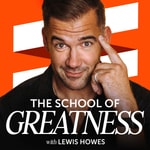Modellansatz - English episodes only – Détails, épisodes et analyse
Détails du podcast
Informations techniques et générales issues du flux RSS du podcast.

Modellansatz - English episodes only
Gudrun Thäter, Sebastian Ritterbusch
Fréquence : 1 épisode/85j. Total Éps: 44

Classements récents
Dernières positions dans les classements Apple Podcasts et Spotify.
Apple Podcasts
🇨🇦 Canada - mathematics
02/08/2025#69🇬🇧 Grande Bretagne - mathematics
02/08/2025#80🇩🇪 Allemagne - mathematics
02/08/2025#68🇨🇦 Canada - mathematics
01/08/2025#69🇬🇧 Grande Bretagne - mathematics
01/08/2025#80🇩🇪 Allemagne - mathematics
01/08/2025#68🇨🇦 Canada - mathematics
31/07/2025#69🇬🇧 Grande Bretagne - mathematics
31/07/2025#80🇩🇪 Allemagne - mathematics
31/07/2025#67🇨🇦 Canada - mathematics
30/07/2025#69
Spotify
Aucun classement récent disponible
Liens partagés entre épisodes et podcasts
Liens présents dans les descriptions d'épisodes et autres podcasts les utilisant également.
See all- http://www.math.kit.edu/latexpng.php?code=
239 partages
- http://modellansatz.de/smart-meter
28 partages
- https://www.ucl.ac.uk/
27 partages
- https://en.wikipedia.org/wiki/Claude_Shannon
20 partages
- https://en.wikipedia.org/wiki/Nikola_Tesla
16 partages
Qualité et score du flux RSS
Évaluation technique de la qualité et de la structure du flux RSS.
See allScore global : 53%
Historique des publications
Répartition mensuelle des publications d'épisodes au fil des années.
Spectral Geometry
mercredi 1 juin 2022 • Durée 40:36
Gudrun talks with Polyxeni Spilioti at Aarhus university about spectral geometry.
Before working in Aarhus Polyxeni was a postdoctoral researcher in the group of Anton Deitmar at the University of Tübingen. She received her PhD from the University of Bonn, under the supervision of Werner Mueller after earning her Master's at the National and Technical University of Athens (Faculty of Applied Mathematics and Physics).
As postdoc she was also guest at the MPI for Mathematics in Bonn, the Institut des Hautes Etudes Scientifiques in Paris and the Oberwolfach Research Institute for Mathematics.
In her research she works on questions like: How can one obtain information about the geometry of a manifold, such as the volume, the curvature, or the length of the closed geodesics, provided that we can study the spectrum of certain differential operators? Harmonic analysis on locally symmetric spaces provides a powerful machinery in studying various invariants, such as the analytic torsion, as well as the dynamical zeta functions of Ruelle and Selberg.
References and further information
- P. Spiliotti: Ruelle and Selberg zeta functions on compact hyperbolic odd dimensional manifolds PhD thesis, Bonn, 2015.
- Greek Women in Mathematics Website
- Celebration of Greek Women in mathematics, May 12 2022
- Greek women in mathematics - First podcast episode
- Eberhard Zeidler on Wikipedia
Podcasts
- A. Pohl: Quantenchaos, Gespräch mit G. Thäter im Modellansatz Podcast, Folge 79, Fakultät für Mathematik, Karlsruher Institut für Technologie (KIT), 2016.
Allyship
jeudi 27 janvier 2022 • Durée 53:23
One of the reasons we started this podcast in 2013 was to provide a more realistic picture of mathematics and of the way mathematicians work. On Nov. 19 2021 Gudrun talked to Stephanie Anne Salomone who is Professor and Chair in Mathematics at the University of Portland. She is also Director of the STEM Education and Outreach Center and Faculty Athletic Representative at UP. She is an Associate Director of Project NExT, a program of the Mathematical Association of America that provides networking and professional development opportunities to mathematics faculty who are new to our profession. She is a wife and mother of three boys, Milo (13), Jude (10), and Theodore (8).
This conversation started on Twitter in the summer of 2021. There Stephanie (under the twitter handle @SitDownPee) and @stanyoshinobu Dr. Stan Yoshinobu invited their fellow mathematicians to the following workshop: Come help us build gender equity in mathematics! Picture a Mathematician workshop led by @stanyoshinobu Dr. Stan Yoshinobu and me, designed for men in math, but all genders welcome. Gudrun was curious to learn more and followed the provided link:
Workshop Abstract
Gender equity in the mathematical sciences and in the academy broadly is not yet a reality. Women (and people of color, and other historically excluded groups) are confronted with systemic biases, daily experiences, feelings of not being welcome or included, that in the aggregate push them out of the mathematical sciences. This workshop is designed primarily for men in math (although all genders are welcome to participate) to inform and inspire them to better see some of the key issues with empathy, and then to take action in creating a level-playing field in the academy.
Workshop activities include viewing “Picture a Scientist” before the workshop, a 2-hour synchronous workshop via zoom, and follow-up discussions via email and Discord server. *All genders welcome AND this workshop is designed for men to be allies.
This idea resonated strongly with Gudrun's experiences: Of course women and other groups which are minorities in research have to speak out to fight for their place but things move forward only if people with power join the cause. At the moment people with power in mathematical research mostly means white men. That is true for the US where Stephanie is working as well as in Germany. Allyship is a concept which was introduced by people of colour to name white people fighting for racial justice at their side. Of course, it is a concept which helps in all situations where a group is less powerful than another. Men working for the advancement of non-male mathematicians is strictly necessary in order for equality of chances and a diversity of people in mathematics to be achieved in the next generation. And to be clear: this has nothing to do with counting heads but it is about not ruining the future of mathematics as a discipline by creating obstacles for mathematicians with minoritized identities.
The important question is: How is it possible to educate men and especially powerful white men to become allies?
The idea of this first workshop designed by Stephanie and Stan was to invite men already interested in learning more and to build a basis with the documentary Picture a scientist (2020).
SYNOPSISPICTURE A SCIENTIST chronicles the groundswell of researchers who are writing a new chapter for women scientists. Biologist Nancy Hopkins, chemist Raychelle Burks, and geologist Jane Willenbring lead viewers on a journey deep into their own experiences in the sciences, ranging from brutal harassment to years of subtle slights. Along the way, from cramped laboratories to spectacular field stations, we encounter scientific luminaries - including social scientists, neuroscientists, and psychologists - who provide new perspectives on how to make science itself more diverse, equitable, and open to all. (from the webpage)
In this film there are no mathematicians, but the situations in sciences and mathematics are very similar and for that it lends itself to show the situation.
In the podcast conversation Gudrun and Stephanie talk about why and in what way the documentary spoke to them. The huge and small obstacles in their own work as women mathematicians which do not make them feel welcome in a field they feel passionate about. The film shows what happens to women in Science. It shows also men in different roles. Obviously there are the bullies. Then there are the bystanders. There are universities which allow women to be hired and give them the smallest space available. But there are also men who consider themselves friends of their female collaegues who cannot believe that they did not notice how the behaviour of other men (and their own behavior in not taking a side). Seeing this play out over the course of the film is not a comfortable watch, and perhaps because of this discomfort, we hope to build empathy.
On the other hand, there is a story of women scientists who noticed that they were not treated as well as their male colleagues and who found each other to fight for office space and the recognition of their work. They succeded a generation ago.
The general idea of the workshop was to start with the documentary and to talk about different people and their role in the film in order to take them as prototypical for roles which we happen to observe in our life and which we might happen to play. This discussion in groups was moderated and guided in order to make this a safe space for everyone.
Stephanie spoke about how we have to let men grow into their responsibility to speak out against a hostile atmosphere at university created mostly by men. In the workshop it was possible to first develop and then train for possible responses in situations which ask for men stepping in as an ally.
The next iteration of the workshop Picture a Mathematician will be on May 11.
Biography: Stephanie Salomone earned her Ph.D. in Mathematics from UCLA in 2005 and joined the faculty at the University of Portland that year. She serves as Professor and Chair of Mathematics and Director of the STEM Education and Outreach Center at UP, as well as the Faculty Athletic Representative. She is an Associate Director of Project NExT, a national professional development program for new higher-education mathematics faculty. She was the PI on the NSF REFLECT program, advancing the use of evidence-based practices in STEM teaching at UP and the use of peer-observation for formative assessment of teaching, and has managed a combined $1.6 million as the PI on a subaward of the Western Regional Noyce Alliance grant and as PI of the NSF Noyce Program at UP. She is on the Board of Directors for Saturday Academy, a local 501c3 whose mission is to engage children in hands-on STEM learning. Dr. Salomone is the recipient of UP’s 2009 Outstanding Teaching Award and the recipient of the 2019 Oregon Academy of Sciences Outstanding Educator in STEM Higher Education Award.
- Allyship: What It Means to Be an Ally, Tulane university, School of social work
- Guide to allyship
- Ernest, Reinholz, and Shah: Hidden Competence: women’s mathematical participation in public and private classroom spaces, Educ Stud Math 102, 153–172 (2019). https://doi.org/10.1007/s10649-019-09910-w
- J.R. Cimpian, T.H. Kimand, Z.T. McDermott: Understanding persistent gender gaps in STEM,
Science 368, Issue 6497, 1317-1319 (2020). https://doi.org/10.1126/science.aba7377
- S.J. Ceci and W.M. Williams: Understanding current causes of women’s underrepresentation in science PNAS 108 3157–3162 (2011). https://doi.org/10.1073/pnas.1014871108
- Inquirybased learning site
- Equatiy and teaching math Blog post by Stan Yoshinobu
Podcasts
Energy Markets
vendredi 21 décembre 2018 • Durée 01:05:00
Gudrun Talks to Sema Coşkun who at the moment of the conversation in 2018 is a Post Doc researcher at the University Kaiserslautern in the group of financial mathematics. She constructs models for the behaviour of energy markets.
In short the conversation covers the questions
- How are classical markets modelled?
- In which way are energy markets different and need new ideas?
The seminal work of Black and Scholes (1973) established the modern financial theory. In a Black-Scholes setting, it is assumed that the stock price follows a Geometric Brownian Motion with a constant drift and constant volatility. The stochastic differential equation for the stock price process has an explicit solution. Therefore, it is possible to obtain the price of a European call option in a closed-form formula. Nevertheless, there exist drawbacks of the Black-Scholes assumptions. The most criticized aspect is the constant volatility assumption. It is considered an oversimplification. Several improved models have been introduced to overcome those drawbacks. One significant example of such new models is the Heston stochastic volatility model (Heston, 1993). In this model, volatility is indirectly modeled by a separate mean reverting stochastic process, namely. the Cox-Ingersoll-Ross (CIR) process. The CIR process captures the dynamics of the volatility process well. However, it is not easy to obtain option prices in the Heston model since the model has more complicated dynamics compared to the Black-Scholes model.
In financial mathematics, one can use several methods to deal with these problems. In general, various stochastic processes are used to model the behavior of financial phenomena. One can then employ purely stochastic approaches by using the tools from stochastic calculus or probabilistic approaches by using the tools from probability theory. On the other hand, it is also possible to use Partial Differential Equations (the PDE approach). The correspondence between the stochastic problem and its related PDE representation is established by the help of Feynman-Kac theorem. Also in their original paper, Black and Scholes transferred the stochastic representation of the problem into its corresponding PDE, the heat equation. After solving the heat equation, they transformed the solution back into the relevant option price. As a third type of methods, one can employ numerical methods such as Monte Carlo methods.
Monte Carlo methods are especially useful to compute the expected value of a random variable. Roughly speaking, instead of examining the probabilistic evolution of this random variable, we focus on the possible outcomes of it. One generates random numbers with the same distribution as the random variable and then we simulate possible outcomes by using those random numbers. Then we replace the expected value of the random variable by taking the arithmetic average of the possible outcomes obtained by the Monte Carlo simulation. The idea of Monte Carlo is simple. However, it takes its strength from two essential theorems, namely Kolmogorov’s strong law of large numbers which ensures convergence of the estimates and the central limit theorem, which refers to the error distribution of our estimates.
Electricity markets exhibit certain properties which we do not observe in other markets. Those properties are mainly due to the unique characteristics of the production and consumption of electricity. Most importantly one cannot physically store electricity. This leads to several differences compared to other financial markets. For example, we observe spikes in electricity prices. Spikes refer to sudden upward or downward jumps which are followed by a fast reversion to the mean level. Therefore, electricity prices show extreme variability compared to other commodities or stocks.
For example, in stock markets we observe a moderate volatility level ranging between 1% and 1.5%, commodities like crude oil or natural gas have relatively high volatilities ranging between 1.5% and 4% and finally the electricity energy has up to 50% volatility (Weron, 2000). Moreover, electricity prices show strong seasonality which is related to day to day and month to month variations in the electricity consumption. In other words, electricity consumption varies depending on the day of the week and month of the year. Another important property of the electricity prices is that they follow a mean reverting process. Thus, the Ornstein-Uhlenbeck (OU) process which has a Gaussian distribution is widely used to model electricity prices. In order to incorporate the spike behavior of the electricity prices, a jump or a Levy component is merged into the OU process. These models are known as generalized OU processes (Barndorff-Nielsen & Shephard, 2001; Benth, Kallsen & Meyer-Brandis, 2007). There exist several models to capture those properties of electricity prices. For example, structural models which are based on the equilibrium of supply and demand (Barlow, 2002), Markov jump diffusion models which combine the OU process with pure jump diffusions (Geman & Roncoroni, 2006), regime-switching models which aim to distinguish the base and spike regimes of the electricity prices and finally the multi-factor models which have a deterministic component for seasonality, a mean reverting process for the base signal and a jump or Levy process for spikes (Meyer-Brandis & Tankov, 2008).
The German electricity market is one of the largest in Europe. The energy strategy of Germany follows the objective to phase out the nuclear power plants by 2021 and gradually introduce renewable energy ressources. For electricity production, the share of renewable ressources will increase up to 80% by 2050. The introduction of renewable ressources brings also some challenges for electricity trading. For example, the forecast errors regarding the electricity production might cause high risk for market participants. However, the developed market structure of Germany is designed to reduce this risk as much as possible. There are two main electricity spot price markets where the market participants can trade electricity. The first one is the day-ahead market in which the trading takes place around noon on the day before the delivery. In this market, the trades are based on auctions. The second one is the intraday market in which the trading starts at 3pm on the day before the delivery and continues up until 30 minutes before the delivery. Intraday market allows continuous trading of electricity which indeed helps the market participants to adjust their positions more precisely in the market by reducing the forecast errors.
References
- S. Coskun and R. Korn: Pricing Barrier Options in the Heston Model Using the Heath-Platen estimator. Monte Carlo Methods and Applications. 24 (1) 29-42, 2018.
- S. Coskun: Application of the Heath–Platen Estimator in Pricing Barrier and Bond Options. PhD thesis, Department of Mathematics, University of Kaiserslautern, Germany, 2017.
- S. Desmettre and R. Korn: 10 Computationally challenging problems in Finance. FPGA Based Accelerators for Financial Applications, Springer, Heidelberg, 1–32, 2015.
- F. Black and M. Scholes: The pricing of options and corporate liabilities. The Journal of Political Economy, 81(3):637-654, 1973.
- S.L. Heston: A closed-form solution for options with stochastic volatility with applications to bond and currency options. The Review of Financial Studies, 6(2):327–343, 1993.
- R. Korn, E. Korn and G. Kroisandt: Monte Carlo Methods and Models in Finance and Insurance. Chapman & Hall/CRC Financ. Math. Ser., CRC Press, Boca Raton, 2010.
- P. Glasserman, Monte Carlo Methods in Financial Engineering. Stochastic Modelling and Applied Probability, Appl. Math. (New York) 53, Springer, New York, 2004.
- M.T. Barlow: A diffusion model for electricity prices. Mathematical Finance, 12(4):287-298, 2002.
- O.E. Barndorff-Nielsen and N. Shephard: Non-Gaussian Ornstein-Uhlenbeck-based models and some of their uses in financial economics. Journal of the Royal Statistical Society B, 63(2):167-241, 2001.
- H. Geman and A. Roncoroni: Understanding the fine structure of electricity prices. The Journal of Business, 79(3):1225-1261, 2006.
- T. Meyer-Brandis and P. Tankov: Multi-factor jump-diffusion models of electricity prices. International Journal of Theoretical and Applied Finance, 11(5):503-528, 2008.
- R. Weron: Energy price risk management. Physica A, 285(1-2):127–134, 2000.
Podcasts
- G. Thäter, M. Hofmanová: Turbulence, conversation in the Modellansatz Podcast, episode 155, Department of Mathematics, Karlsruhe Institute of Technology (KIT), 2018. http://modellansatz.de/turbulence
- G. Thäter, M. J. Amtenbrink: Wasserstofftankstellen, Gespräch im Modellansatz Podcast, Folge 163, Fakultät für Mathematik, Karlsruher Institut für Technologie (KIT), 2018. http://modellansatz.de/wasserstofftankstellen
- S. Ajuvo, S. Ritterbusch: Finanzen damalsTM, Gespräch im Modellansatz Podcast, Folge 97, Fakultät für Mathematik, Karlsruher Institut für Technologie (KIT), 2016. http://modellansatz.de/finanzen-damalstm
- K. Cindric, G. Thäter: Kaufverhalten, Gespräch im Modellansatz Podcast, Folge 45, Fakultät für Mathematik, Karlsruher Institut für Technologie (KIT), 2015. http://modellansatz.de/kaufverhalten
- V. Riess, G. Thäter: Gasspeicher, Gespräch im Modellansatz Podcast, Folge 23, Fakultät für Mathematik, Karlsruher Institut für Technologie (KIT), 2015. http://modellansatz.de/gasspeicher
- F. Schueth, T. Pritlove: Energieforschung, Episode 12 im Forschergeist Podcast, Stifterverband/Metaebene, 2015. https://forschergeist.de/podcast/fg012-energieforschung/
Inno2Grid
jeudi 6 décembre 2018 • Durée 35:44
Gudrun talks to Carlos Mauricio Rojas La Rotta. They use a Skype connection since Carlos is in Berlin and Gudrun in Karlsruhe.
Carlos is an electrical engineer from Colombia. His first degree is from Pontifcia Universidad Javeriana in Bogotá. For five years now he has been working at Schneider Electric in Berlin. In September 2018 Gudrun met Carlos at the EUREF-Campus in Berlin for discussing the work of Claire Harvey on her Master's thesis. The schedule on that day was very full but Gudrun and Carlos decided to have a Podcast conversation later.
Carlos came to Germany as a car enthusiast. Then he got excited about the possibilities of photovoltaic energy production. For that from 2005-2007 he studied in the Carl von Ossietzky Universität in Oldenburg in the PPRE Master course Renewable Energies. When he graduated within a group of about 20 master students they found a world ready for their knowledge. Carlos worked in various topics and in different parts of Germany in the field of renewable energies. Now, at Schneider he has the unique situation, that he can combine all his interests. He develops the most modern cars, which are driving with renewable energy. In the course of his work he is also back at his original love: working with electronics, protocols and data.
The work on the EUREF-Campus in Berlin started about 8-10 years ago with more questions than clear ideas. Schneider Electric is a big company with about 150.000 employees all over the world. They deal in all types of software and hardware devices for energy delivery. But the topic for Berlin was completely new: It was a test case how to construct energy sustainable districts.
They started out investing in e-mobility with renewable energy and making their own offices a smart building. It is a source of a lot of data telling the story how energy is produced and consumed. At the moment they collect 1GB data per day in the office building on about 12.000 measure points into database and build this as a benchmark to compare it to other scenarios. The next step now is also to find ways to optimize these processes with limited computational possibilities.
This is done with open source code on their own interface and at the moment it can optimize in the micro smart grid on the Campus. For example with 40 charging points for e-cars - consumption is planned according to production of energy. On Campus traditional batteries are used to buffer the energy, and also a bus now works on the Campus which can be discharged and is loaded without a cable!
One can say: Carlos is working in a big experiment. This does not only cover a lot of new technical solutions. The Energiewende is more than putting photovoltaic and wind power out. We as a society have to change and plan differently - especially concerning mobility.
Schneider Electric just started an expansion phase to the whole campus, which has a size of 5.5 ha and 2500 people working there. More than 100 charging point for e-cars will be available very soon.
Podcasts
- C. Harvey, G. Thäter: Micro Grids, Gespräch im Modellansatz Podcast, Folge 186, Fakultät für Mathematik, Karlsruher Institut für Technologie (KIT), 2018.
Micro Grids
vendredi 9 novembre 2018 • Durée 31:56
Gudrun talks with the Scotish engineer Claire Harvey. After already having finished a Master's degree in Product design engineering at the University of Glasgow for the last two years Claire has been a student of the Energy Technologies (ENTECH) Master program. This is an international and interdisciplinary program under the label of the European Institute of Innovation and Technology (EIT) inbetween a number of European technical universities. She spent her first year in Lisbon at Instituto Superior Técnico (IST) and the second master year at the Karlsruhe Institute of Technology (KIT). Gudrun had the role of her supervisor at KIT while she worked on her Master's thesis at the EUREF Campus in Berlin for the Startup inno2grid.
Her study courses prepared her for very diverse work in the sector of renewable energy. Her decision to work with inno2grid in Berlin was based on the fact, that it would help to pave the way towards better solutions for planning micro grids and sustainable districts. Also, she wanted to see an actual micro grid at work. The office building of Schneider Electric, where the Startup inno2grid has its rooms is an experiment delivering data of energy production and consumption while being a usual office building. We will hear more about that in the episode with Carlos Mauricio Rojas La Rotta soon.
Micro grids are small scale electrical grid systems where self-sufficient supply is achieved. Therefore, the integration of micro grid design within district planning processes should be developed efficiently. In the planning process of districts with decentralised energy systems, unique and customised design of micro grids is usually required to meet local technical, economical and environmental needs. From a technical standpoint, a detailed understanding of factors such as load use, generation potential and site constraints are needed to correctly and most efficiently design and implement the network. The presence of many different actors and stakeholders contribute to the complexity of the planning process, where varying levels of technical experience and disparate methods of working across teams is commonplace.
Large quantities of digital information are required across the whole life-cycle of a planning project, not just to do with energetic planning but also for asset management and monitoring after a micro grid has been implemented. In the design of micro grids, large amounts of data must be gathered, there are initial optimization objectives to be met, and simulating control strategies of a district which are adapted to customer requirements is a critical step. Linking these processes - being able to assemble data as well as communicate the results and interactions of different "layers" of a project to stakeholders are challenges that arise as more cross-sector projects are carried out, with the growing interest in smart grid implementation.
Claire's thesis explores tools to assist the planning process for micro grids on the district scale. Using geographical information system (GIS) software, results relating to the energetic planning of a district is linked to geo-referenced data. Layers related to energy planning are implemented - calculating useful parameters and connecting to a database where different stakeholders within a project can contribute. Resource potential, electrical/thermal demand and supply system dimensioning can be calculated, which is beneficial for clients and decision makers to visualize digital information related to a project. Within the open source program QGIS, spatial analysis and optimizations relating to the design of an energy system are performed. As the time dimension is a key part in the planning of the energy supply system of a micro grid, the data is linked to a Python simulation environment where dynamic analysis can be performed, and the results are fed back in to the QGIS project.
References
- T. Benz et al.: Der Zellulare Ansatz. VDE, Energietechnische Gesellschaft, Frankfurt, Germany, 2015.
- A. Halu et al.: Data-driven modeling of solar-powered urban microgrids. Science Advances 2 (1). DOI:10.1126/sciadv.1500700, 2016.
- M. Giudice and E. Patti: BIM and GIS for District Modelling Politecnico di Torino, Turin, Italy, 2014.
- QGIS
- Ch. Nytsch-Geusen et al.: Sustainable and energy-efficient redevelopment of city quarters - Analytical and planning tools for energy assessment and rehabilitation of urban districts. Universität der Künste, Berlin, 2015.
Podcasts
- Z. Ahamed, G. Thäter: Electric Vehicles on the Grid, Gespräch im Modellansatz Podcast, Folge 183, Fakultät für Mathematik, Karlsruher Institut für Technologie (KIT), 2018.
- G. Thäter, M. J. Amtenbrink: Wasserstofftankstellen, Gespräch im Modellansatz Podcast, Folge 163, Fakultät für Mathematik, Karlsruher Institut für Technologie (KIT), 2018.
- G. Thäter, B. Pousinho: Weather Generator, Gespräch im Modellansatz Podcast, Folge 148, Fakultät für Mathematik, Karlsruher Institut für Technologie (KIT), 2017.
Electric Vehicles on the Grid
vendredi 19 octobre 2018 • Durée 49:03
Gudrun talks to Zaheer Ahamed about the influence of an increasing number of Electric vehicles (EV) to the electrical grid. Zaheer just finished the ENTECH Master's program. He started it with his first year at the Karlsruhe Institute for Technology (KIT) and continued in Uppsala University for the second year.
Gudrun was part of the grading process of Zaheer's master thesis "Estimating Balancing Capacities of Electric Vehicles on the German and Swedish grids in 2030".
The rising awareness of pollution from transport is leading to innovations within the transport sector. At the moment EVs are the leading technology. With many countries Germany and Sweden joined the so-called EV30@30 campaign, aiming for 30% of new vehicles sales to be electric by 2030. These ambitions alongside an ever increasing capacity of variable renewable energy sources (RES) in our power systems, pose a concerning challenge for Transmission systems operators (TSO) to maintain proper power system operation. Imbalances between supply and demand are undesirable in any electrical power system and with the rising popularity of EVs and RES such events are only expected to continue or increase.
Fortunately, with the recent development of Vehicle to grid (V2G) concepts as well as extensive studies into the load-shifting potential of EVs, EVs presents an interesting solution for power system balancing distributed energy storage system. Zaheer's study showed that EV are capable of balancing the grid for approximately 60% of the time providing 55-60% of the total balancing energy required. However, the operation also took heavy toll on the EV’s battery performance as it could potentially reduce its life to a 1/7th of its original lifetime.
References
- Commission Regulation (EU) 2017/1485 of 2 August 2017 on establishing a guideline on electricity transmission system operation, 2017.
- S. Weitemeyer e.a.: Integration of Renewable Energy Sources in future power systems: The role of storage. Renewable Energy, 75 pp.14-20, 2015.
- D.M.Greenwood e.a.: Frequency response services designed for energy storage. Applied Energy, 203 pp.115-127, 2017.
- Eurostat Database
- J. Schäuble e.a.: Generating electric vehicle load profiles from empirical data of three EV fleets in Southwest Germany. Journal of Cleaner Production, 150 pp.253-266, 2017.
Podcasts
- Volker Quaschning, Tim Pritlove: Energiewende, Forschergeist 053, Stifterverband / Metaebene, 2018.
- V. Auinger, G. Thäter: Optimale Akkuladung, Gespräch im Modellansatz Podcast, Folge 160, Fakultät für Mathematik, Karlsruher Institut für Technologie (KIT), 2018. http://modellansatz.de/optimale-akkuladung
- M. Lösch, S. Ritterbusch: Smart Meter Gateway, Gespräch im Modellansatz Podcast, Folge 135, Fakultät für Mathematik, Karlsruher Institut für Technologie (KIT), 2017. http://modellansatz.de/smart-meter
- M. Maier, G. Thäter: Akkumulatoren, Gespräch im Modellansatz Podcast, Folge 123, Fakultät für Mathematik, Karlsruher Institut für Technologie (KIT), 2017. http://modellansatz.de/akkumulatoren
- D. Schumann, M. Voelter: Elektromobilität, Omega Tau Podcast 163, Makus Völter und Nora Ludewig, 2015.
- J. Dickmann, S. Ritterbusch: Pumpspeicherkraftwerke, Gespräch im Modellansatz Podcast, Folge 5, Fakultät für Mathematik, Karlsruher Institut für Technologie (KIT), 2013.
SimScale
jeudi 11 octobre 2018 • Durée 36:44
Gudrun talks to Jousef Murad about the computing platform SimScale. Jousef is currently studying mechanical engineering at the Karlsruhe Institute of Technology (KIT) and focuses on turbulence modelling and computational mechanics in his Master's studies. He first learned about the existence of SimScale early in the year 2015 and started as a FEA (finite element analysis) simulation assistant in November 2016. Meanwhile he switched to Community Management and now is Community and Academic Program Manager at the company being responsible for user requests and Formula student teams all over the world. Formula student is a name for design competitions for teams of students constructing racing cars.
SimScale is a cloud-based platform that gives instant access to computational fluid dynamics (CFD) and finite element analysis (FEA) simulation technology, helping engineers and designers to easily test performance, optimize durability or improve efficiency of their design. SimScale is accessible from a standard web browser and from any computer, eliminating the hurdles that accompany traditional simulation tools: high installation costs, licensing fees, deployment of high-performance computing hardware, and required updates and maintenance.
Via the platform, several state-of-the-art open solvers are made available like,e.g., OpenFOAM and Meshing with SnappyHexMesh. More information about the packages being used can be found at https://www.simscale.com/open-source/ .
On top of having easier access to open source software, the connected user forum is very active and helps everybody to enter the field even as a person without experience.
Founded in 2012 in Munich (Germany), nowadays SimScale is an integral part of the design validation process for many companies worldwide and individual users. It is mainly used by product designers and engineers working in Architecture, Engineering & Construction or Heating, Ventilation & Air-Conditioning. Also in the Electronics, Consumer Goods and Packaging and Containers industries SimScale is useful for testing and optimizing designs in the early development stages.
SimScale offers pricing plans that can be customized, from independent professionals to SMEs and multinational companies. The Community plan makes it possible to use SimScale for free, with 3000 core hours/year using up to 16 cloud computing cores.
Simulation around Burj Khalifa using SimScale
References
- Turbulence models on the English Wikipedia
- S. Pope: Turbulent Flows. Cambridge University Press, 2000.
- P. Sagaut, C. Cambon: Homogeneous Turbulence Dynamics. Cambridge University Press, 2008.
Related Podcasts
- G. Thäter, M. Hofmanová: Turbulence, Gespräch im Modellansatz Podcast, Folge 155, Fakultät für Mathematik, Karlsruher Institut für Technologie (KIT), 2018.
- N. Vercauteren, S. Ritterbusch: Lokale Turbulenzen, Gespräch im Modellansatz Podcast, Folge 144, Fakultät für Mathematik, Karlsruher Institut für Technologie (KIT), 2017.
- P. Allinger, N. Stockelkamp, G. Thäter: Strukturoptimierung, Gespräch im Modellansatz Podcast, Folge 53, Fakultät für Mathematik, Karlsruher Institut für Technologie (KIT), 2015.
- B.Valsler, D. Ansell: The Science of Turbulence, The Naked Scientists Podcast, 2010.
Mechanical Engineering
jeudi 2 août 2018 • Durée 53:29
In the last two semesters Gudrun has taught the courses Advanced Mathematics I and II for Mechanical Engineers. This is a mandatory lecture for the International mechanical engineering students at KIT in their first year of the Bachelor program. This program is organized by the Carl Benz School of Engineering. Beside the study courses, the school also provides common housing for students coming to Karlsruhe from all over the world.
The general structure and topics of the first year in Advanced Mathematics were already discussed in our episode 146 Advanced Mathematics with Jonathan Rollin.
This time Gudrun invited two students from her course to have the student's perspective, talking about mathematics, life, and everything.
Yueyang Cai grew up mostly in China. In 2015, the work of her mother led Yueyang to Stuttgart. While looking for opportunities to study a technical subject in Germany the English speaking program in Karlsruhe somehow suggested itself. After one year she is sure to have made the right decision.
The second student in the conversation is Siddhant Dhanrajani. His family is Indian but lives in Dubai. For that he got his education in Dubai in an Indian community follwowing the Indian educational system (CBSE). He had never heard of the Engineering program in Karlsruhe but found it through thourough research. He is really amazed at how such an excellent study program and such an excellent university as the KIT are not better known for their value in the world.
In the conversation both students talk about their education in their respective countries, their hopes and plans for the study course mechanical engineering and their experiences in the first year here in Karlsruhe. It is very interesting to see how the different ways to teach mathematics, namely, either as a toolbox full of recipes (which the students get well-trained in) or secondly as a way to approach problems in a context of a mathematical education contribute to an experience to be well-equipped to work creative and with a lot of potential as an engineer.
Though the students finished only the first year in a three years course they already work towards applications and necessary certificates for their possible master program after finishing the course in Karlsruhe.
Related Podcasts- G. Thäter, J. Rollin: Advanced Mathematics, Conversation in the Modellansatz Podcast, Episode 146, Department of Mathematics, Karlsruhe Institute for Technology (KIT), 2017.
- F. Hettlich, G. Thäter: Höhere Mathematik, Gespräch im Modellansatz Podcast, Folge 34, Fakultät für Mathematik, Karlsruher Institut für Technologie (KIT), 2014.
Dynamical Sampling
jeudi 12 juillet 2018 • Durée 33:23
Gudrun met the USA-based mathematician Roza Aceska from Macedonia in Turin at the Conference MicroLocal and Time-Frequency Analysis 2018.
The topic of the recorded conversation is dynamical sampling. The situation which Roza and other mathematician study is: There is a process which develops over time which in principle is well understood. In mathematical terms this means we know the equation which governs our model of the process or in other words we know the family of evolution operators. Often this is a partial differential equation which accounts for changes in time and in 1, 2 or 3 spatial variables. This means, if we know the initial situation (i.e. the initial conditions in mathematical terms), we can numerically calculate good approximations for the instances the process will have at all places and at all times in the future.
But in general when observing a process life is not that well sorted. Instead we might know the principal equation but only through (maybe only a few) measurements we can find information about the initial condition or material constants for the process. This leads to two questions: How many measurements are necessary in order to obtain the full information (i.e. to have exact knowledge)? Are there possibilities to choose the time and the spatial situation of a measurement so clever as to gain as much as possible new information from any measurement? These are mathematical questions which are answered through studying the equations.
The science of sampling started in the 1940s with Claude Shannon who found fundamental limits of signal processing. He developed a precise framework - the so-called information theory. Sampling and reconstruction theory is important because it serves as a bridge between the modern digital world and the analog world of continuous functions. It is surprising to see how many applications rely on taking samples in order to understand processes. A few examples in our everyday life are: Audio signal processing (electrical signals representing sound of speech or music), image processing, and wireless communication. But also seismology or genomics can only develop models by taking very intelligent sample measurements, or, in other words, by making the most scientific sense out of available measurements.
The new development in dynamical sampling is, that in following a process over time it might by possible to find good options to gain valuable information about the process at different time instances, as well as different spatial locations. In practice, increasing the number of spatially used sensors is more expensive (or even impossible) than increasing the temporal sampling density. These issues are overcome by a spatio-temporal sampling framework in evolution processes. The idea is to use a reduced number of sensors with each being activated more frequently. Roza refers to a paper by Enrique Zuazua in which he and his co-author study the heat equation and construct a series of later-time measurements at a single location throughout the underlying process. The heat equation is prototypical and one can use similar ideas in a more general setting. This is one topic on which Roza and her co-workers succeeded and want to proceed further.
After Roza graduated with a Ph.D. in Mathematics at the University of Vienna she worked as Assistant Professor at the University Ss Cyril and Methodius in Skopje (Macedonia), and after that at the Vanderbilt University in Nashville (Tennessee). Nowadays she is a faculty member of Ball State University in Muncie (Indiana).
References- Overview on sampling theory and applications: M. Unser: Sampling-50 years after Shannon Proceedings of the IEEE 88 (4) 569 - 587, 2000.
- Dynamical sampling in shift-invariant spaces: R. Aceska e.a.: Dynamical Sampling in Shift-Invariant Spaces 2014 (Version at Archive}
- Dynamical sampling: R. Aceska, A. Petrosyan, S. Tang: Dynamical sampling of two-dimensional temporally-varying signals International Conference on Sampling Theory and Applications (SampTA), DOI:10.1109/SAMPTA.2015.7148929, 2015.
- DeVore, Ronald, and Enrique Zuazua: Recovery of an initial temperature from discrete sampling, Mathematical Models and Methods in Applied Sciences 24.12 (2014): 2487-2501, 2014.
- Evolution operators involved in dynamical sampling: S. Tang: System identification in dynamical sampling, Advances in Computational Mathematics 43 (3) 555–580, 2017.
- On Bessel systems, bases and frames in the dynamical sampling setup: A.Aldroubi e.a.:lterative actions of normal operators Journal of Functional Analysis 272 (3), 1121-1146, 2017.
- G. Thäter, E. Zuazua: Waves, Conversation in Modellansatz Podcast Episode 054, Fakultät für Mathematik, Karlsruher Institut für Technologie (KIT), 2015.
Algebraic Geometry
jeudi 28 juin 2018 • Durée 51:28
Gudrun spent an afternoon at the Max Planck Institute for Mathematics in the Sciences (MPI MSI) in Leipzig. There she met the Colombian mathematician Eliana Maria Duarte Gelvez. Eliana is a PostDoc at the MPI MSI in the Research group in Nonlinear Algebra. Its head is Bernd Sturmfels.
They started the conversation with the question: What is algebraic geometry? It is a generalisation of what one learns in linear algebra insofar as it studies properties of polynomials such as its roots. But it considers systems of polynomial equations in several variables so-called multivariate polynomials. There are diverse applications in engineering, biology, statistics and topological data analysis. Among them Eliana is mostly interested in questions from computer graphics and statistics.
In any animated movie or computer game all objects have to be represented by the computer. Often the surface of the geometric objects is parametrized by polynomials. The image of the parametrization can as well be defined by an equation. For calculating interactions it can be necessary to know what is the corresponding equation in the three usual space variables. One example, which comes up in school and in the introductory courses at university is the circle. Its representation in different coordinate systems or as a parametrized curve lends itself to interesting problems to solve for the students.
Even more interesting and often difficult to answer is the simple question after the curve of the intersection of surfaces in the computer representation if these are parametrized objects. Moreover real time graphics for computer games need fast and reliable algorithms for that question. Specialists in computer graphics experience that not all curves and surfaces can be parametrized. It was a puzzling question until they talked to people working in algebraic geometry. They knew that the genus of the curve tells you about the possible vs. impossible parametrization.
For the practical work symbolic algebra packages help. They are based on the concept of the Gröbner basis. Gröbner basis help to translate between representations of surfaces and curves as parametrized objects and graphs of functions. Nevertheless, often very long polynomials with many terms (like 500) are the result and not so straightforward to analyse.
A second research topic of Eliana is algebraic statistics. It is a very recent field and evolved only in the last 20-30 years. In the typical problems one studies discrete or polynomial equations using symbolic computations with combinatorics on top. Often numerical algebraic tools are necessary. It is algebraic in the sense that many popular statistical models are parametrized by polynomials. The points in the image of the parameterization are the probability distributions in the statistical model. The interest of the research is to study properties of statistical models using algebraic geometry, for instance describe the implicit equations of the model.
Eliana already liked mathematics at school but was not always very good in it. When she decided to take a Bachelor course in mathematics she liked the very friendly environment at her faculty in the Universidad de los Andes, Bogotá. She was introduced to her research field through a course in Combinatorial commutative algebra there. She was encouraged to apply for a Master's program in the US and to work on elliptic curves at Binghamton University (State University of New York) After her Master in 2011 she stayed in the US to better understand syzygies within her work on a PhD at the University of Illinois at Urbana-Champaign. Since 2018 she has been a postdoc at the MPI MSI in Leipzig and likes the very applied focus especially on algebraic statistics.
In her experience Mathematics is a good topic to work on in different places and it is important to have role models in your field.
References
- E. Duarte, Ch. Görgen: Equations defining probability tree models
- E. Duarte: Implicitization of tensor product surface in the presence of a generic set of basepoints. 2016. Journal of Algebra and Applications(to appear).
- Rigidity of Quasicrystal Frameworks - webpage
- E. M. Duarte, G. K. Francis: Stability of Quasicrystal Frameworks in 2D and 3D Proceedings of the First Conference Transformables 2013.In the Honor of Emilio Perez Piñero 18th-20th September 2013, Seville, Spain
- Portraits of people working in Nonlinear Algebra
Podcasts
- P. Schwer: Metrische Geometrie, Gespräch mit G. Thäter im Modellansatz Podcast, Folge 102, Fakultät für Mathematik, Karlsruher Institut für Technologie (KIT), 2016.









